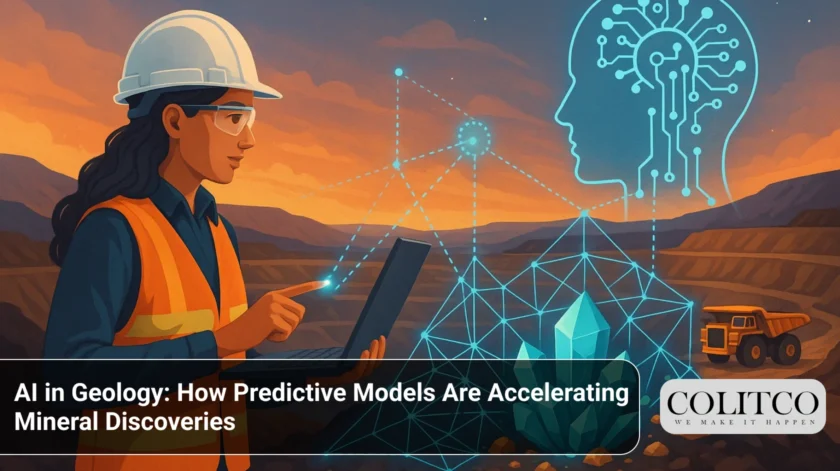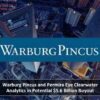Revolutionary Technology Transforms Australian Mining Sector
Artificial intelligence applications in geological surveys are fundamentally changing how mining companies discover mineral deposits across Australia. Traditional exploration methods achieve success rates below one per cent, but AI-powered systems now demonstrate discovery rates exceeding 75 per cent in controlled applications.
The transformation represents a paradigm shift from manual geological interpretation to machine-driven pattern recognition. Australian companies lead this revolution through sophisticated predictive modelling platforms that process decades of geological data within hours rather than months.
Breakthrough Performance Statistics Challenge Traditional Methods
Mining exploration traditionally requires substantial investment with minimal guaranteed returns. Earth AI, an Australian technology pioneer, reported spending 2.1 million dollars to achieve three successful discoveries in 2023, while the global mining industry allocated 12.8 billion dollars for 45 discoveries during the same period.
The stark contrast illustrates how artificial intelligence algorithms optimise resource allocation. Companies utilising AI-driven exploration report 28 per cent higher discovery rates compared to conventional geological surveys. This improvement translates directly into reduced financial risk and accelerated project timelines.
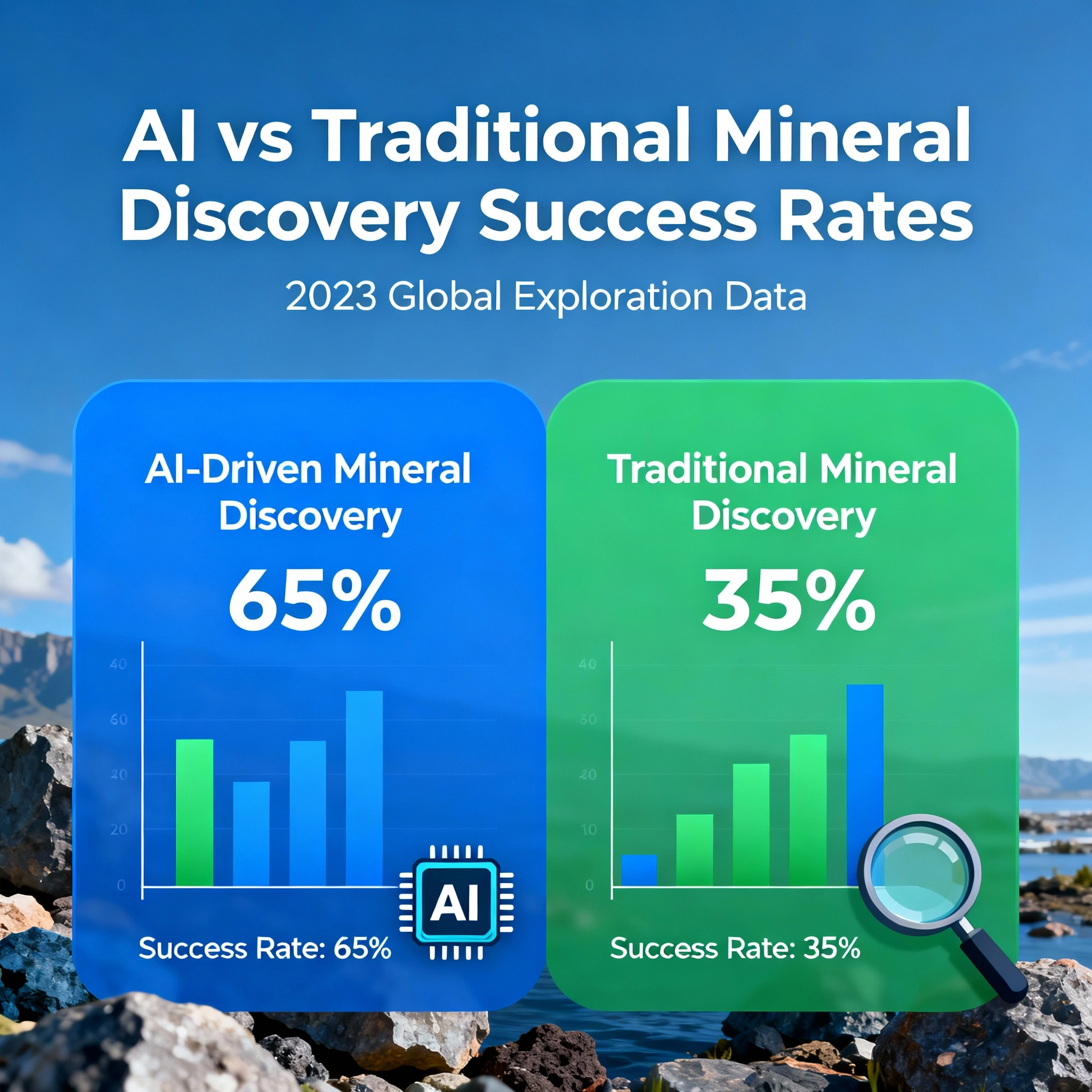 AI vs Traditional Discovery Success Rates
AI vs Traditional Discovery Success Rates
Machine Learning Algorithms Process Complex Geological Datasets
Modern mineral exploration generates massive volumes of data from satellite imagery, geophysical surveys, geochemical analyses, and historical drilling records. Traditional methods struggle to integrate these diverse information sources effectively, often missing subtle patterns that indicate mineralisation.
Artificial intelligence systems excel at identifying non-linear relationships within multidimensional datasets. Machine learning algorithms analyse geological fingerprints from known mineral deposits, then scan vast territories for areas displaying similar characteristics. This process enables predictive mapping that highlights probability zones for successful exploration.
Australian Companies Pioneer Greenfield Discovery Technologies
Earth AI achieved the first verified greenfield mineral discovery using artificial intelligence technology. The company identified extensive palladium mineralisation across two square kilometres near Wombat, New South Wales, establishing one of Australia’s largest platinum group element prospects.
Legacy Minerals partnered with Earth AI to develop the Fontenoy Project, discovering magmatic nickel, copper, and platinum group elements on Australia’s east coast. This breakthrough demonstrates how AI applications extend beyond traditional mineral targets to identify previously unknown deposit types.
Six additional mineral prospects containing tungsten, cobalt, and gold were unveiled across Australian tenements during 2025. These discoveries utilised proprietary algorithms trained on continental-scale geological databases spanning 50 years of exploration data.
Predictive Models Slash Exploration Costs and Timeframes
Financial modelling demonstrates substantial cost reductions through AI implementation in mineral exploration. Predictive analytics can reduce drilling costs by 30 to 40 per cent while maintaining exploration coverage. Equipment downtime decreases by 30 per cent through predictive maintenance systems.
Traditional mine development averages 17 years from discovery to production. Companies implementing AI-driven exploration report timeline compression to approximately 8.5 years, representing a 50 per cent improvement in project delivery.
Maintenance planning time reduces by 20 to 50 per cent when mining operations adopt predictive analytics. Overall maintenance costs decrease by five to ten per cent through data-driven approaches that prevent equipment failures before they occur.
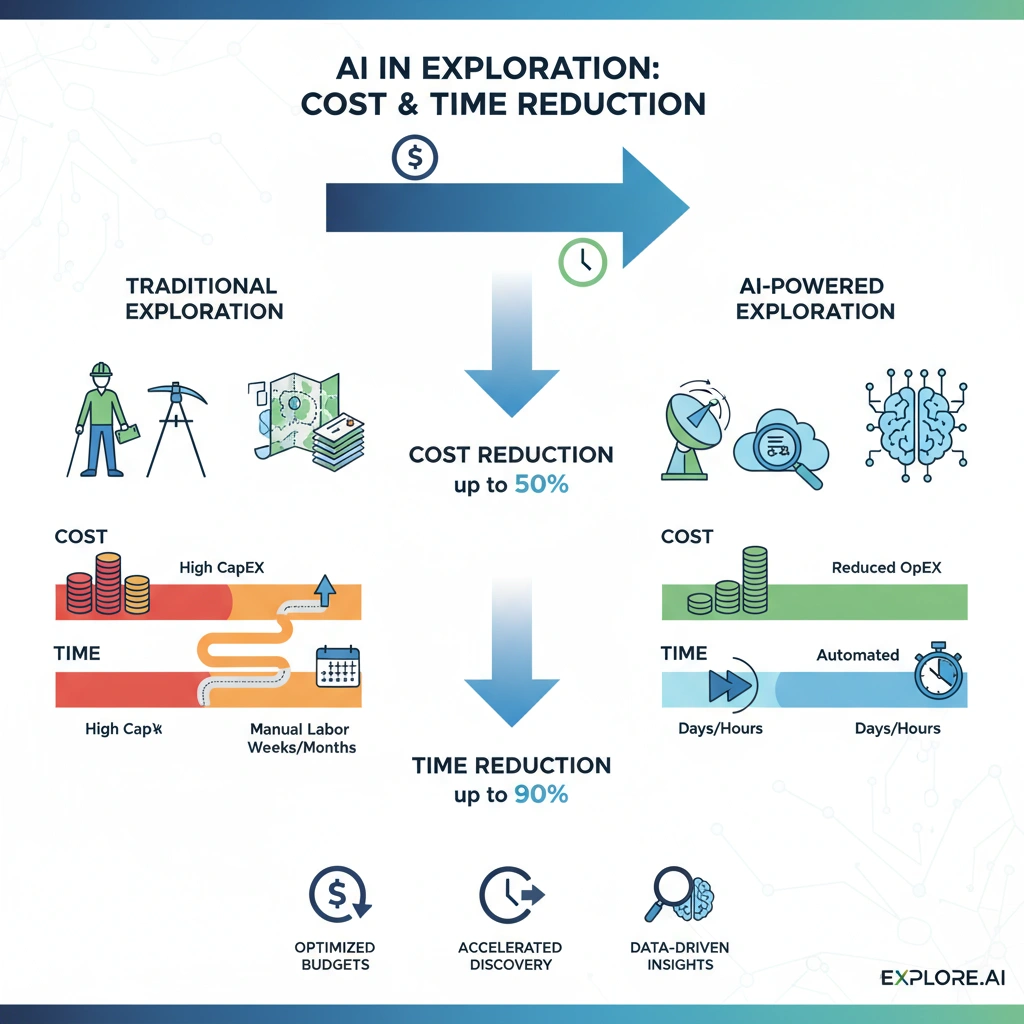 Cost and Time Reduction with AI
Cost and Time Reduction with AI
Market Growth Reflects Industry Confidence in AI Applications
The global artificial intelligence in mining market expanded from 24.99 billion dollars in 2024 to 35.47 billion dollars in 2025. This 42 per cent growth rate indicates widespread industry adoption of intelligent systems for exploration and operations.
Geological AI stocks outperformed the S&P 500 index by 17 per cent during the first quarter of 2025. Investor confidence reflects demonstrated returns from companies successfully implementing AI-powered exploration strategies.
Australian maiden resource announcements declined 41 per cent between 2023 and 2024, highlighting the need for more effective exploration technologies. Companies adopting AI systems position themselves to reverse this declining trend through improved discovery rates.
Advanced Data Processing Transforms Traditional Workflows
Artificial intelligence systems process geological data within hours compared to weeks required for manual analysis. This acceleration enables real-time decision making during active exploration programmes. Satellite imagery analysis identifies mineral signatures across thousands of square kilometres daily.
Hyperspectral analysis detects unique reflectance patterns associated with specific minerals and alteration zones. Machine learning algorithms correlate these surface indicators with subsurface mineralisation, creating probability maps that guide drilling decisions.
Three-dimensional geological modelling incorporates AI-generated insights to visualise subsurface structures. These models improve resource estimation accuracy while reducing uncertainty in mineral reserve calculations.
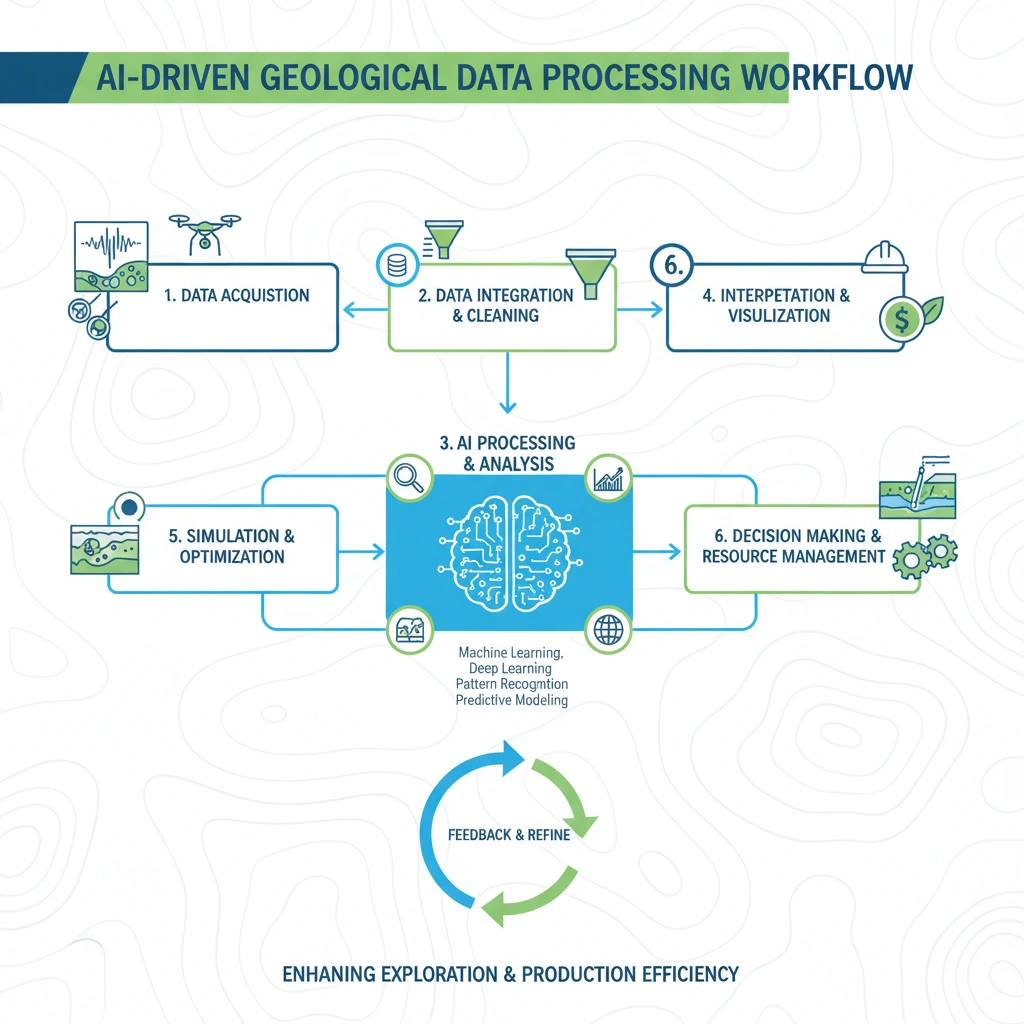
AI Geological Data Workflow
Ensemble Modelling Techniques Quantify Discovery Confidence
Sophisticated AI systems create multiple predictive models using different input combinations. When diverse algorithms agree on target locations, exploration teams gain high confidence in drilling recommendations. Probability volumes quantify mineralisation likelihood across exploration areas.
Areas displaying prediction probabilities above ten per cent warrant early-stage exploration. Zones exceeding 50 per cent probability justify immediate development drilling programmes. This risk-based approach reduces exploration costs by 35 per cent while improving discovery success rates.
Ensemble modelling addresses the nugget effect in high-grade ore deposits. The Jundy Mine case study demonstrated 24 per cent efficiency improvement for locating high-grade blocks compared to traditional methods. AI systems discovered 3.2 times more high-grade material using identical drilling programmes.
Also Read: Nickel Sulphate Demand and ASX Companies Poised for EV Battery Growth
Integration Challenges and Future Development Pathways
Despite proven benefits, AI implementation faces technical and operational challenges. Geological data quality varies significantly across different regions and historical periods. Standardisation efforts aim to create consistent datasets suitable for machine learning applications.
Ground-truthing remains essential to validate AI predictions through physical sampling and drilling. This requirement maintains capital-intensive verification processes, although AI systems significantly improve target selection accuracy.
The integration of AI systems with existing exploration workflows requires specialised training for geological teams. Companies invest in comprehensive education programmes to ensure effective technology adoption.
Environmental considerations drive sustainable exploration practices through AI optimisation. Reduced drilling requirements minimise land disturbance while maintaining exploration effectiveness. Predictive models support more precise mine planning that reduces environmental impact.
Economic Impact Extends Beyond Direct Cost Savings
Australian mining companies implementing AI technologies report substantial financial benefits beyond reduced exploration costs. Syncrude Canada avoided 20 million dollars in annual operating costs through predictive analytics implementation.
Votorantim Cimentos achieved 5.5 million dollars in corrective maintenance savings per site across six facilities. The company experienced ten per cent maintenance cost reduction and six per cent asset reliability improvement between 2019 and 2021.
Resource conversion drilling costs decreased 37 per cent when copper porphyry operations utilised AI-generated probability maps. These savings directly improve project economics and investment returns.

